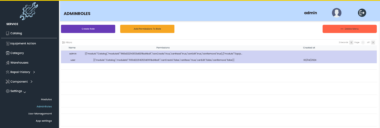Frequently Asked Questions (FAQ) about UBOS Asset Marketplace’s MCP Server for Azure AI Search
Q: What is an MCP Server? A: MCP stands for Model Context Protocol. An MCP Server acts as a bridge, allowing AI models to access and interact with external data sources and tools, enriching their understanding and improving the relevance of their responses. It standardizes how applications provide context to Large Language Models (LLMs).
Q: What is the MCP Server for Azure AI Search? A: It is a specific MCP server implementation available on the UBOS Asset Marketplace, designed to seamlessly integrate Azure AI Search capabilities into AI models like Claude Desktop. It enables AI models to search your indexed documents and the web, providing context-aware responses.
Q: What are the two implementations offered for the MCP Server for Azure AI Search? A: The UBOS Asset Marketplace offers two distinct implementations:
- Azure AI Agent Service Implementation: Leverages the Azure AI Agent Service for AI-enhanced search and web grounding with source citations.
- Direct Azure AI Search Implementation: Connects directly to Azure AI Search with keyword, vector, and hybrid search methods.
Q: What are the key benefits of using the MCP Server for Azure AI Search? A: Key benefits include:
- AI-Enhanced Search: Optimized search results with intelligent processing.
- Multiple Data Sources: Search both private documents and the public web.
- Source Citations: Web search results include citations to original sources.
- Flexible Implementation: Choose between Azure AI Agent Service or direct Azure AI Search integration.
- Seamless Claude Integration: Access search capabilities through Claude Desktop’s interface.
- Customizable: Easily extend or modify search behavior.
Q: What are the prerequisites for using the MCP Server? A: Prerequisites include:
- An active Azure subscription.
- Azure AI Search service with an index containing vectorized text data.
- Claude Desktop installed.
- Python 3.10 or higher.
Q: How do I configure the MCP Server with Claude Desktop?
A: You configure the MCP server by modifying the mcpServers section in Claude’s configuration file, providing the necessary credentials and paths.
Q: How do I test the MCP Server integration with Claude Desktop? A: Restart Claude Desktop and use the MCP tools icon (hammer icon) to perform searches within your Azure AI Search index and the web. Check Claude Desktop logs for troubleshooting.
Q: What is UBOS, and how does it relate to the MCP Server? A: UBOS is a full-stack AI Agent Development Platform that helps you orchestrate AI Agents, connect them with your enterprise data, build custom AI Agents, and create Multi-Agent Systems. The UBOS Asset Marketplace provides pre-built AI tools and components like the MCP Server.
Q: Can I customize the MCP Server to meet my specific needs? A: Yes, the MCP Server is customizable. You can modify tool instructions, add new tools, customize response formatting, and adjust web search parameters.
Q: Where can I find detailed setup instructions and troubleshooting tips? A: Refer to the official documentation provided by UBOS for detailed setup instructions and troubleshooting tips.
Q: What if the server isn’t appearing in Claude Desktop?
A: Check Claude Desktop logs (located at %APPDATA%Claudelogsmcp*.log on Windows), verify file paths and environment variables in the configuration, and test running the server directly using python azure_ai_agent_service_server.py or uv run python azure_ai_agent_service_server.py.
Azure AI Search Integration
Project Details
- farzad528/mcp-server-azure-ai-search
- Other
- Last Updated: 5/19/2025
Recomended MCP Servers


Connect Claude to Linear project management systems. Retrieve, create, and manage issues and projects seamlessly.
Nefino middleware implementation of the Model Context Protocol (MCP)


A specialized MCP server for Claude Desktop that enhances AI-assisted medical learning
Send emails directly from Cursor with this email sending MCP server

Servidor MCP para integrar modelos de linguagem com a Evolution API
Интеграция Strava API с Model Context Protocol SDK


 From vibe coding to vibe deployment. UBOS MCP turns ideas into infra with one message.
From vibe coding to vibe deployment. UBOS MCP turns ideas into infra with one message.






